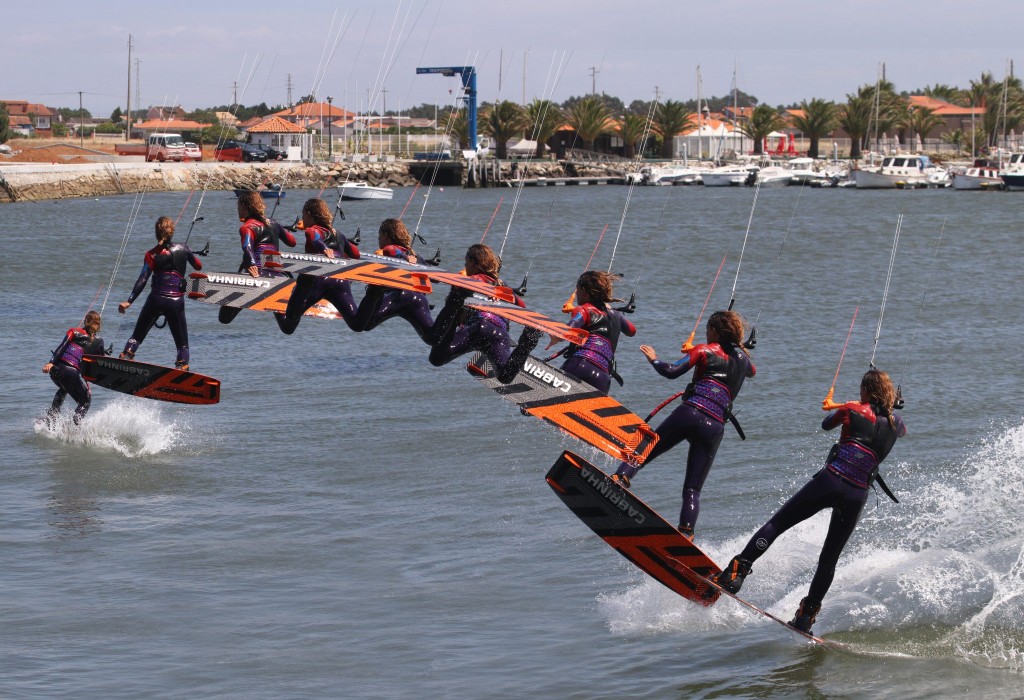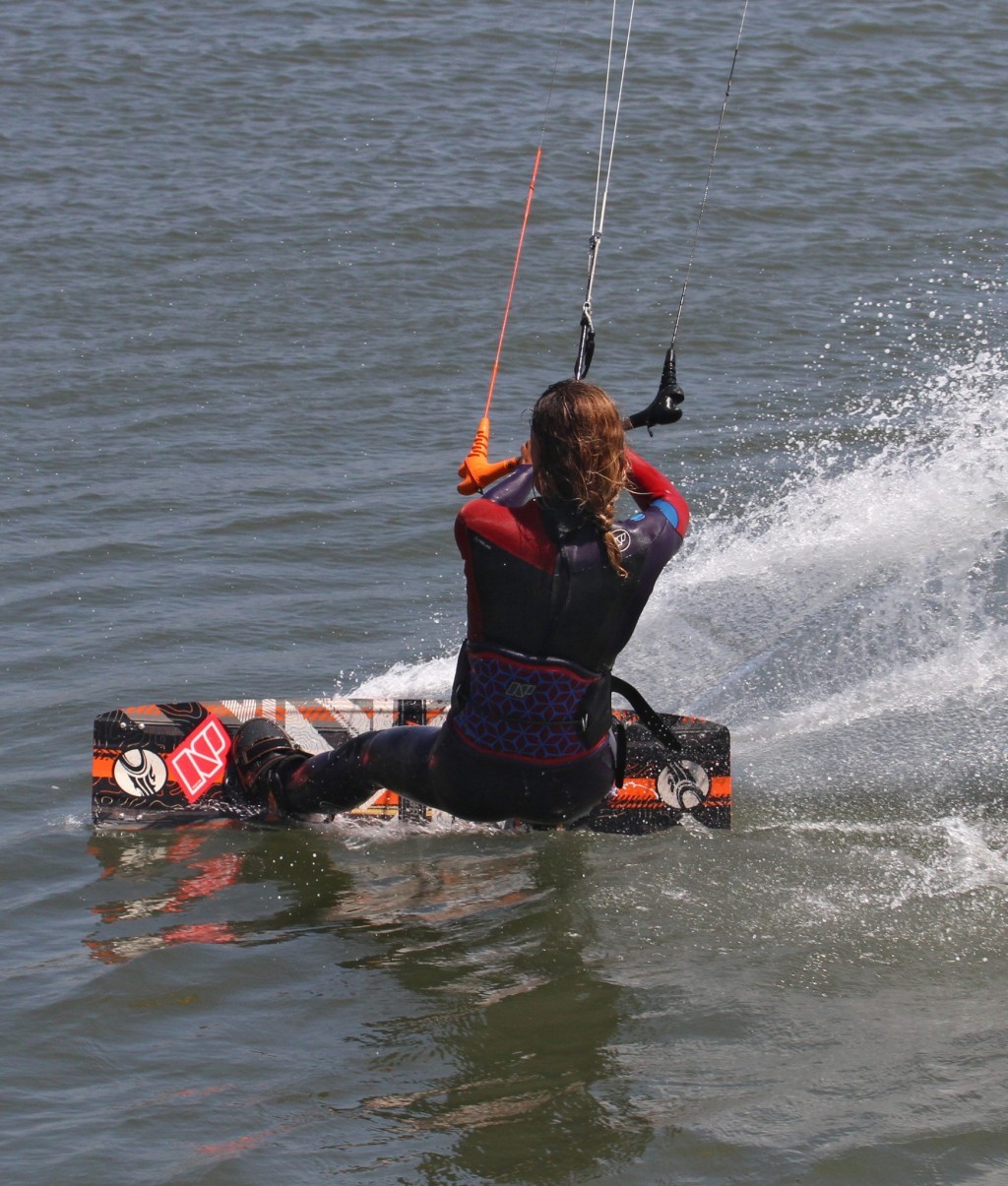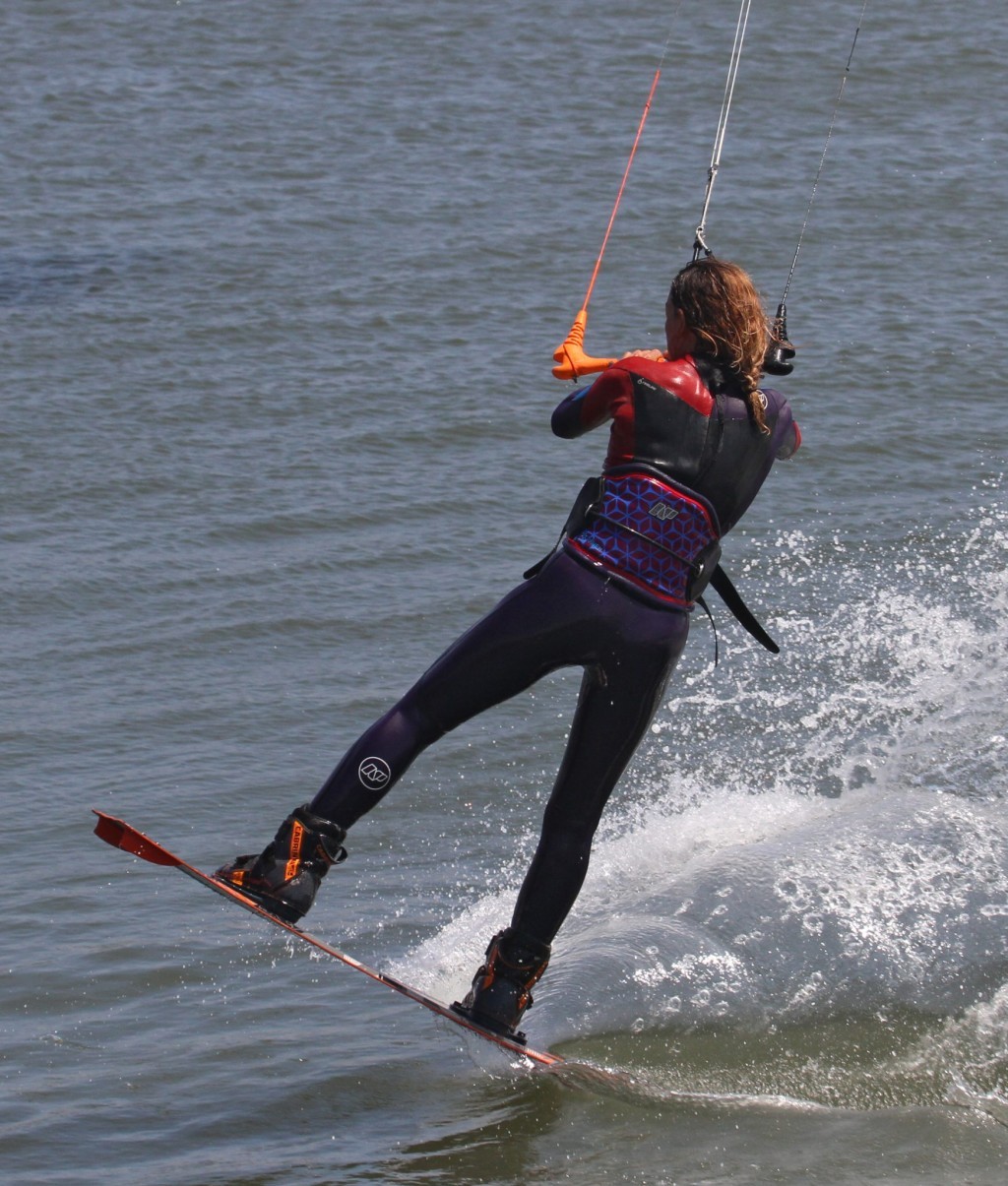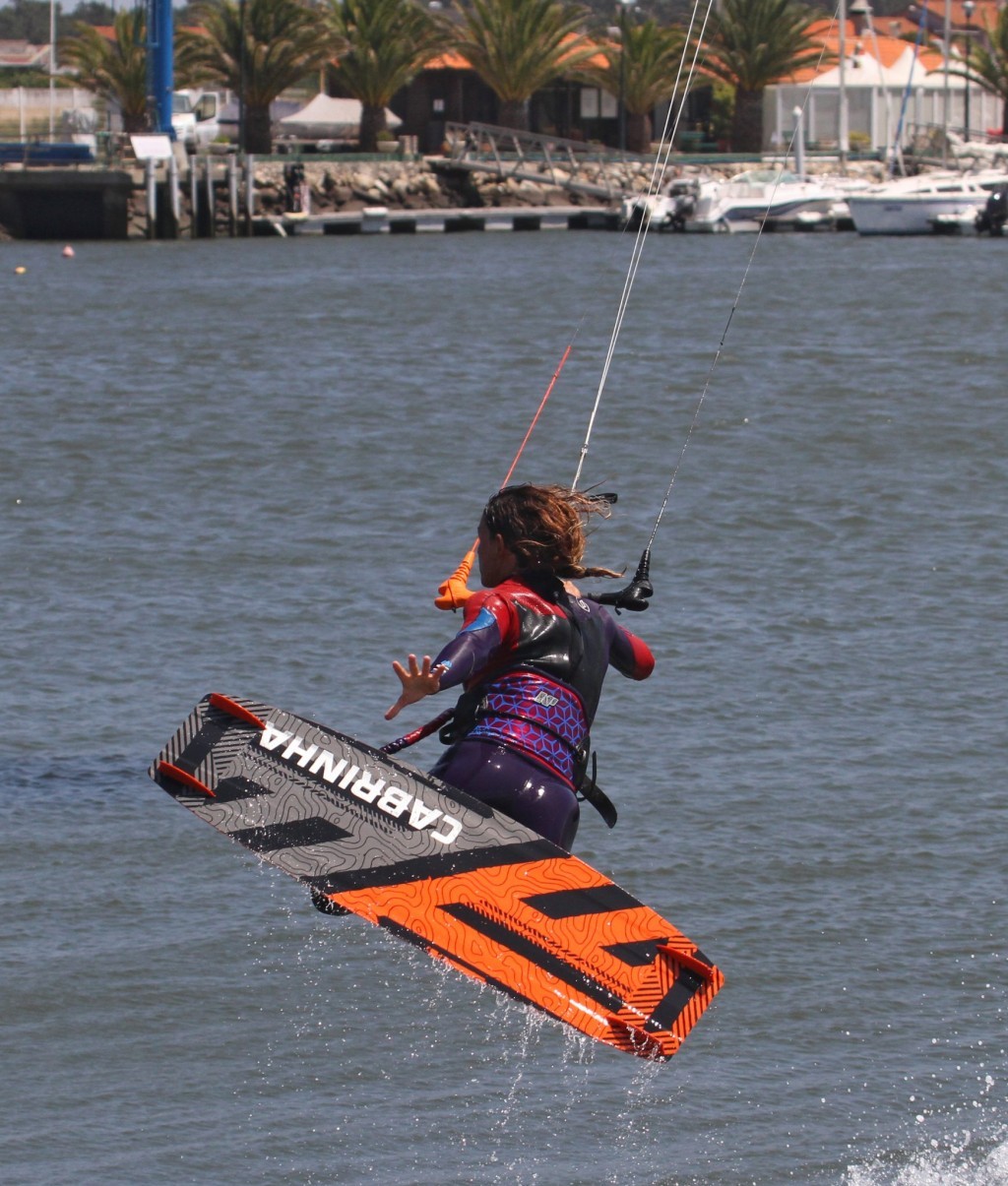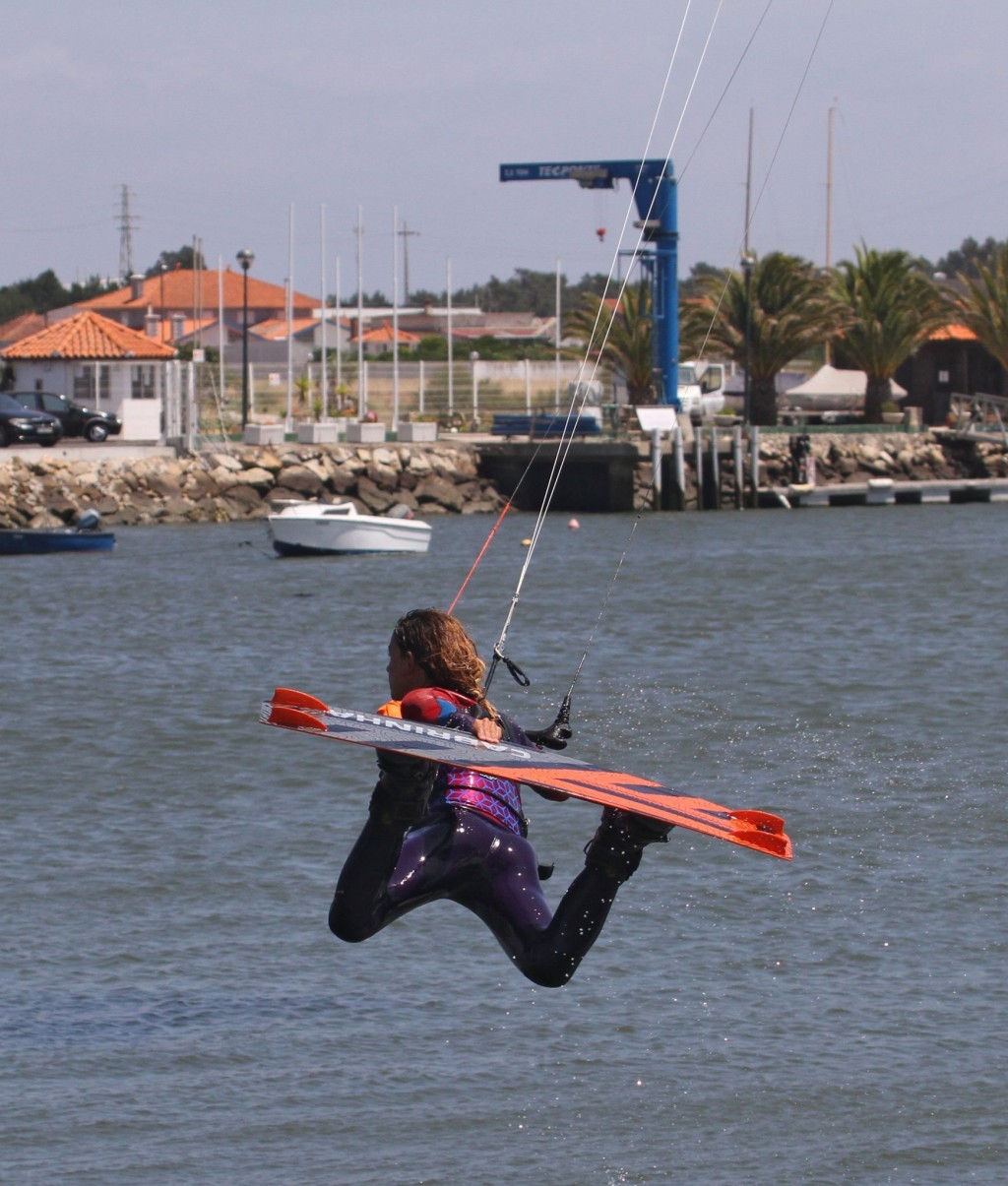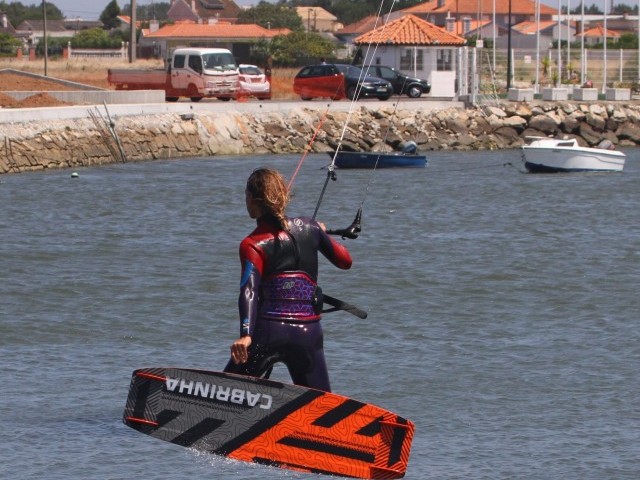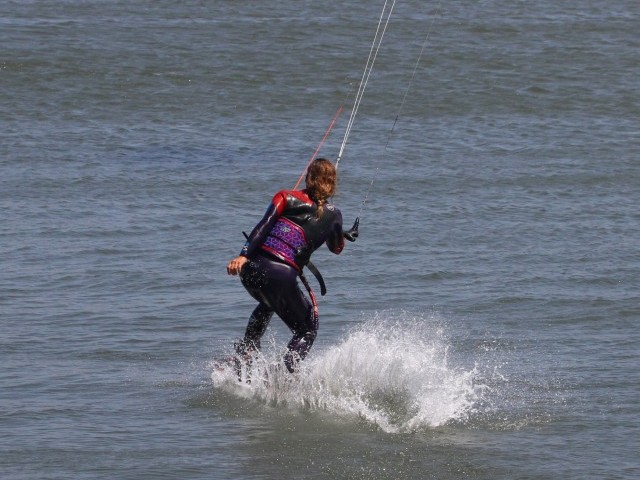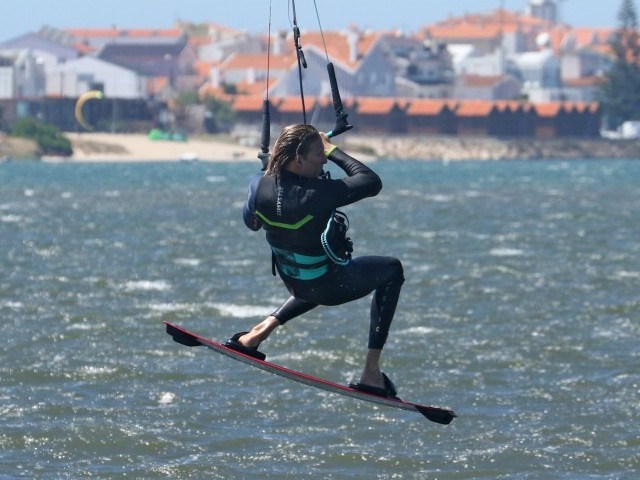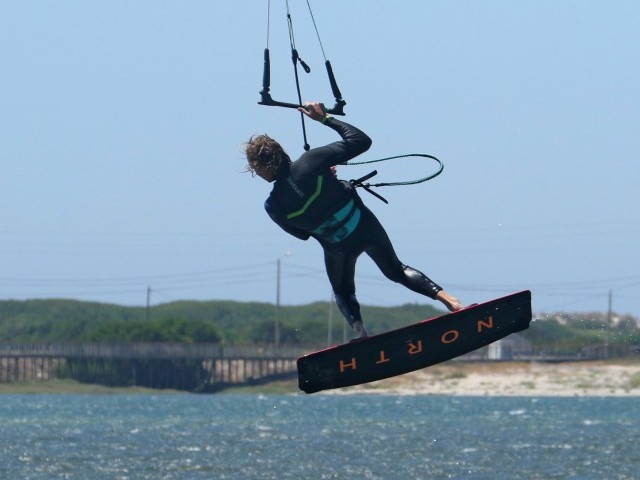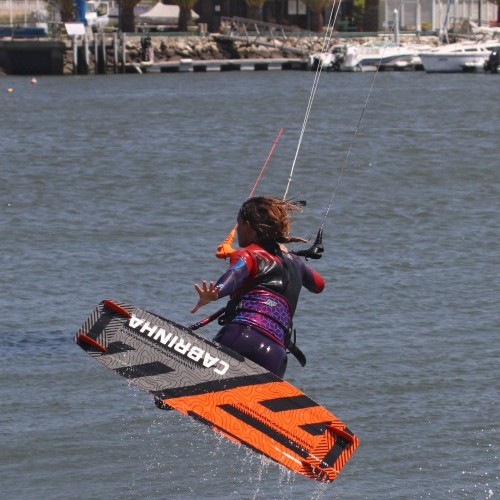
Hoochie Glide – Hooked
Technique / Intermediate
Introduction
This is a fun addition to anyone’s popping arsenal. It used to be a very wakestyle move back in the day as it definitely comes from those masochists who ride behind boats. The beauty with kiting’s very own Hoochie Glide is that you can learn it with support from the kite, so there’s no need to book the osteopath for the following morning. In the simplest terms, a Hoochie Glide is a grabbed raley, using the front hand to grab the heelside of your board. However, we wouldn’t recommend that you go out there, bang out a powered raley and release your front hand in the hope of reaching the board and landing with a smile on your face. It is, in fact, a gentler move, an extreme pop, or a toned down raley, and we’re going for the hooked in version too. Let’s see how we’re going to nail this one; it's most excellent.
In anticipation, we would expect that you have a good pop, and go even further and suggest that you can do a decent enough hooked in raley, as it’ll be easier to mellow the raley down, than rad your pop up!
Approach & Body Position Pic A.
Needless to say, your approach and body position need to be set in default pop mode. That means your hips moved back over or behind your back foot strap, so you’re riding the board of the back third and on its curvy part. As you’ll be hooked in you, don’t want your sweet spot too close, as you’ll likely dump power when you pop. Nor too far out as it’ll prevent you from keeping low and popping well. To start with make sure your kite is at or just below 1 or 11 o’clock for a bit of a helping hand. You’ll want to come in on an edge with speed before bearing off and then edging back up. Make sure that your hands are centred on the bar. If you have a look at Pic A. Karine is just carving up ready to pop. Her weight is dropped back over the tail of the board, so it’ll carve up nice and easy, her kite is parked around 11 o’clock, she’s not sending it, and she’s not throwing her head upwind as she doesn’t want to launch herself into a fully extended flicked raley. We’ll see why shortly.
The Pop Pic B.
Hopefully, this bit should be pre-programmed but just in case we’ll have a quick recap. Popping is about extending, aggressively exploding against your edge – stamping down against your back foot, kicking yourself upwind of your board. It’s the kite that then pulls you forward. The timing of your kick is important as it’ll decide what happens next. Assuming that you went off the wind, it enables you to carve back up without stopping, however, if you wait too long the kite will start to pull you up and over the board, which then means you can’t stamp against it. Because you’re hooked in you, do have the ability to sheet out slightly if the kite pulls you before you’ve popped. However, there is also the danger of trying to power yourself off the water by pulling the bar in. This is a monster no no. It must all come from your back leg – don’t wait for something to happen, make it happen. You can see that both Karine’s legs are extended, her front was already as her weight was back, and now her back leg is also extended as she stamps against the board. It’s also important to note that she’s looking forwards, the kite hasn’t moved, and she still has both hands on the bar.
The Take Offs Pic C.
Yes, that is a pair of offs. We’re talking from the water and from the bar. Let’s start with the water. Our take off will set in motion what happens next, or more specifically what type of move we’ll go into. As previously mentioned, we want a toned down raley; not a flicked outstretched powered number. So, as you pop you will not swing your legs around and follow through from your carve. This action will give you flick. What you’re aiming for is more of an old-school kick in the head type raley, which means that the board will be horizontal, parallel – ish to the water rather than vertical nose high. Your knees will bend so that the board scorpions up behind you. This has the rather brilliant effect of placing the board within reach of the forthcoming grab. The next off is the front hand. It stays firmly on the bar while you pop and only releases once you’re airborne. Reasons being that you can control the power with two hands, keeping the bar on the sweet spot, you can also keep the kite still so that it doesn’t drift up and you can keep your shoulders facing forwards. Whereas with your front hand off early you’ll twist into a flick. Looking at Karine, you can see how the board is coming up behind her rather than flicking around. She’s now released her front hand and is reaching back, and her knees are bending, so that the board comes closer.
Boom, the Hoochie Glide Pic D.
If all goes to plan this is what will be happening. You’ll be in a back scratching position with the board up flat behind you, knees bent, so that you can easily reach the heelside edge and claim a firm grab on your board. You can see that Karine has her bar pulled in on the sweet spot, if not she’d just drop and it’s not like you’ll have hours up there anyway. She’s looking forwards to where she’s going, and the kite is still pulling, it hasn’t sneaked up. Nice.
Go with Newton Pic E.
Just like when you learnt to raley, there is a moment when gravity takes over, and the board wants to fall. Don’t fight it. This is your cue to release the grab and let everything follow the natural order. The board will swing under you, as it drops it’ll pull away from your hand, and your only mission now is to try and point the board downwind for a soft landing. Note, however, that Karine still has her bar in on the sweet spot, so the kite is still pulling her forwards, meaning that she’ll have speed when she lands, which will both lessen the impact and also guarantees that she keeps moving.
Touch Down Pic F.
As with all pop tricks, your landing will be easier if your approach was correct. That bearing away downwind before carving up to pop dropped the kite back in the window and meant that you had pull through the move and downwind slightly, making the downwind landing a cert. Added to this keeping the bar on the sweet spot because you’re hooked in, and you’ve got it made. You can see here that before landing this one Karine didn’t have time to get her front hand back on the bar, but it didn’t matter as the kite has not moved up and the bar is in so she’s pulled all the way. As long as she points the board downwind towards the kite and lands flat, she’ll hammer on.
Top Tips
A final few helpful pointers never hurt anyone. First off, flat water. The flatter it is the easier it will be to pop. If you have a little wave acting as a stunt ramp be our guest, but messy chop will play havoc with your speed and take off while trying to learn this.
Don’t rush. With many grabbed moves it’s necessary to rush. In the case of the Hoochie Glide, it’s not. Take off with two hands so that you can pop well, keep the kite under control and keep the power on. Once you are gliding, you can think about the Hoochie.
The final nugget is forcing yourself to keep the bar on the sweet spot. As you reach behind you, extending your free front arm for the grab, the natural reaction is to extend your back arm too, like a pair of wings. Don’t do it, you’ll immediately lose power, the kite will flap forward to the edge of the window, and you’ll drop like a stone, making the move even shorter!
Now have a good gander at the sequence and videos to get yourself ready.
Common Problems
If you’ve done a lot of raley's you’ll be used to following through with your carve for the flick, however, this won’t give you the head kick, back scratching scorpion board position. Once you stamp make sure to end the carve.
If you’re missing the grab, chances are that the board is too far away. Make sure that as the board swings back, you bend your knees so that the board comes closer.
If you’ve got no time in the air, you’re letting the bar out past the sweet spot. This could be the result of letting go with your front hand too early, or having your sweet spot positioned to close to you, so trim it away if possible. If you’re verging on underpowered, this can be very difficult.
Keystones
- Hips back, hands centred, kite fixed in position
- Bear away, then carve to pop
- Stamp with both hands on the bar; no follow through
- Bend knees and reach back for grab
- Bar in on the sweet spot throughout…
This technique article was in Issue 64 of IKSURFMAG.
Related
By Christian and Karine
Christian and Karine have been working together as a coaching team, running improver to advanced kitesurfing clinics since 2003.






